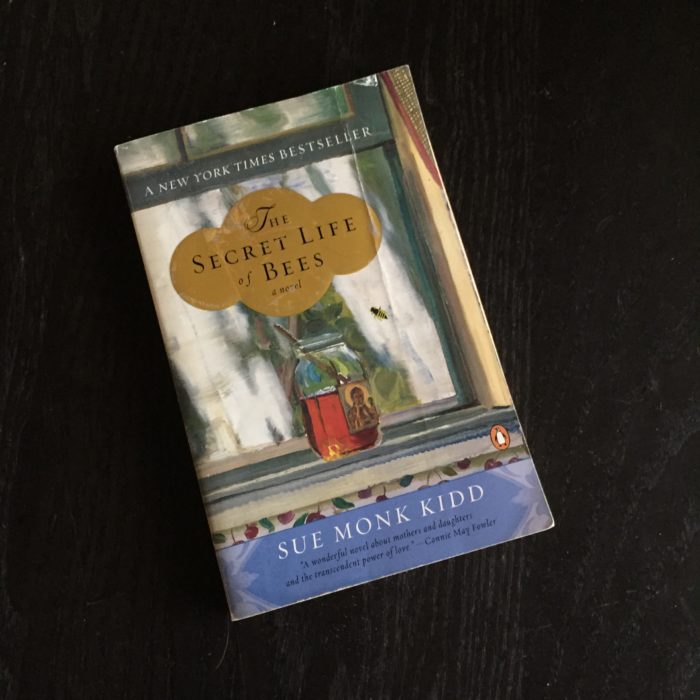There is a passage in Sue Monk Kidd’s The Secret Life of Bees that set my hair on end. She describes a town, like any 1950’s town in South Carolina. A town that, with a few contemporary substitutions could describe many towns across the US today. Those comfortable with the prevailing power structure of the time probably felt right at home. In this story, the symbols menaced the runaways: a white girl and a black woman. Reading, I felt as uneasy as they did, in the same way I feel uneasy entering some towns in my home state.
“Tiburon was a place like Sylvan, minus the peaches. In front of the domed courthouse someone had stuck a Confederate flag in the mouth of their public cannon. South Carolina was Dixie first, America second. You could not get the pride of Fort Sumpter out of us if you tried. ❡Strolling down Main Street, we moved through long blue shadows cast from the two-story buildings that ran the length of the street. At a drugstore, I peered through the plate glass at the soda fountain with chrome trim, where they sold cherry Cokes and banana splits, thinking that soon it would not be just for white people anymore. ❡We walk past Worth Insurance Agency, Tiburon County Rural Electric office, and the Amen Dollar Store which had Hula Hoops, swim goggles, and boxes of sparklers in the window with SUMMER FUN spray-painted across the glass. A few places, like the Farmers Trust Bank, had GOLDWATER FOR PRESIDENT signs in the windows, sometimes with a bumper sticker across the bottom saying AFFIRMATION VIETNAM” (65).
Kidd, Sue Monk. The Secret Life of Bees. Penguin Books. 2003.

Recently, someone I love posed a hypothetical: “Say you were in prison. Being white, who would you align with for protection? Wouldn’t you align with the white supremacists, I mean, to survive?” I haven’t been able to get the conundrum out of my head since—the problem extends well beyond the prison walls. And, because I value honesty, I didn’t have a plain answer.
To manifest, Power must overwhelm some Other, must render them powerless and dependent. Thereafter, in exchange for privileges and protection, the disempowered modify their behavior to please their masters. They align to survive. The closer they are to power in appearance and persuasion the more natural the accommodations seem.
I am a white woman programmed from birth in the art and craft of appearing pleasing to white men. Trained for survival. I know to sublimate parts of myself so I can pass by a hostile group unmolested or through unfriendly territory. For self-preservation—but more often expediency—I keep my mouth shut, head down.
It feels like instinct, but it’s programming.
My view of the human condition is Hobbesian—a war of all against all. We humans find temporary and illusory reprieve within our tribes and under the protection of kings both organized against some Other to create cohesion. Absent these shelters an individual’s life is nasty, brutish and short.
This is why I couldn’t answer the hypothetical with an unequivocal “No! Never!” In doing and saying nothing I preserve myself but maintain the status quo I disdain. I’m not proud to admit that unless pressed I’m not as brave as I’d aspire to be. No, I wouldn’t align but I might hide.
If you’d like a copy of this story on the cheap, my copy is for sale on Ebay.
